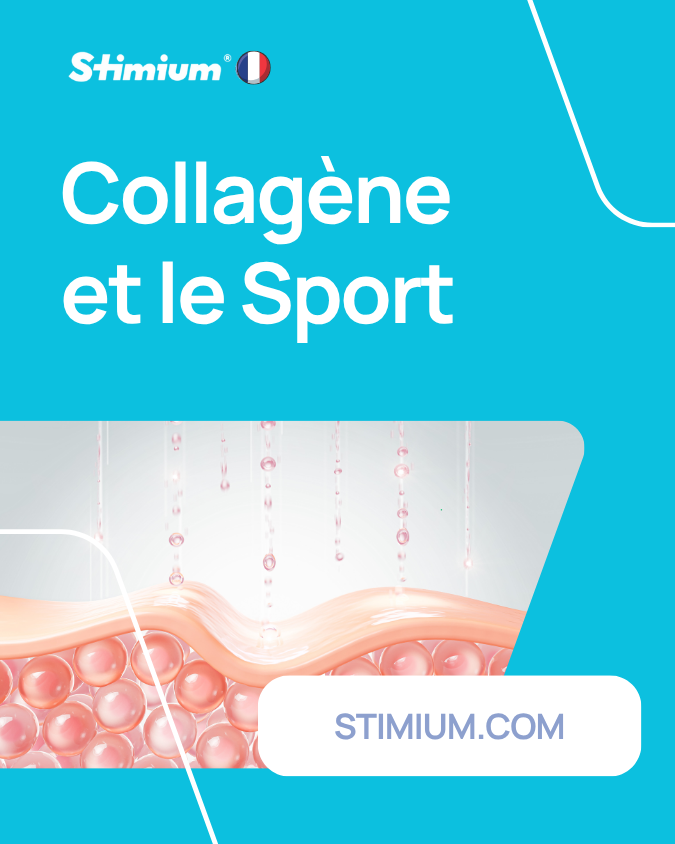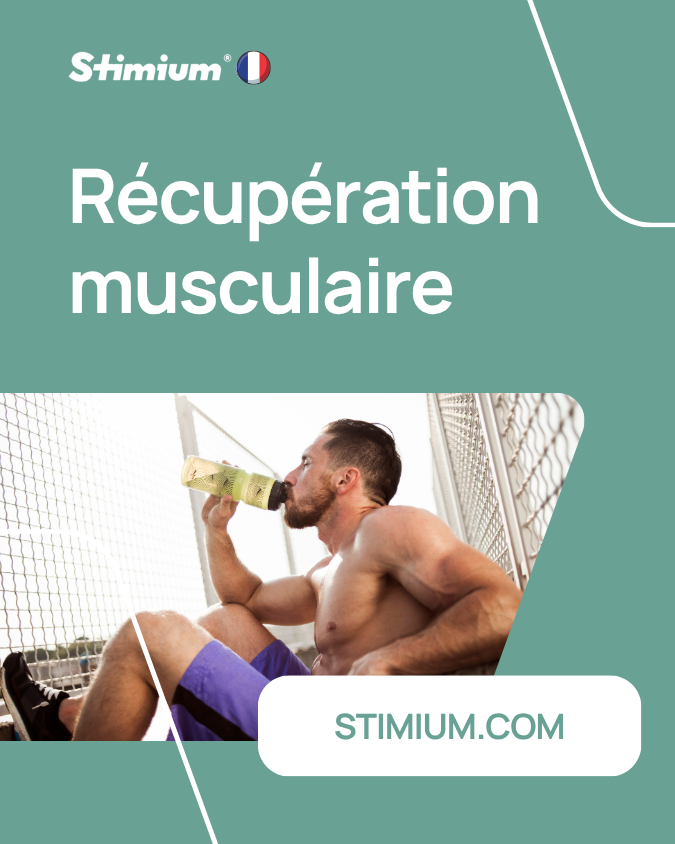Effective Tips for Better Sports Recovery
Recovery is essential to optimize sports performance. During training, our body gets tired and uses up energy. The recovery phase allows our body to regenerate and rebuild, thus improving our performance during future workouts. There are different recovery techniques effective in promoting this essential phase after exercise.
The Return to Calm Phase
End a workout with a calm down phase is essential to promote muscle recovery . By gradually decreasing the intensity of the exercise during the last 10 minutes, we allow the metabolism and cardiovascular system to return to normal functioning. This helps limit muscle acidity and promotes a faster transition to the recovery phase, thus avoiding too rapid remobilization of the body.
During the calm down phase , it is recommended to practice low-intensity exercises such as stretching light, deep breathing or muscle relaxation exercises. These activities help relax muscles, improve blood circulation and reduce the risk of soreness or injury.
By giving our body time to gradually adapt to stopping intense physical activity, we allow our muscles to recover more effectively. It is therefore important not to neglect this phase of returning to calm and to give it all the importance it deserves in our training program.
Stretching
THE stretching are an integral part of a good muscle recovery routine. After each workout, taking a few minutes to stretch can significantly help reduce muscle tension and promote recovery. Stretching also helps loosen muscles, which helps maintain good mobility and prevent injuries.
For effective stretching, start with gentle, slow movements, avoiding sudden jerks that could cause injury. Focus on the muscle groups worked during your workout, stretching each group for about 20 to 30 seconds. Remember to breathe deeply during stretching to promote relaxation and the relaxing effect.
- Some examples of stretches to include in your recovery routine:
- Quadriceps stretch: Stand, lift your foot toward your butt and grab your ankle with your hand to stretch the quadriceps. Hold the position for 20 to 30 seconds on each side.
- Hamstring stretch: Sit on the floor with one leg straight and the other bent. Lean forward slightly, trying to reach your toes with your hands. Hold the position for 20 to 30 seconds on each side.
- Shoulder stretch: Stand straight, place one arm in front of you and use the other arm to gently pull the straight arm toward your chest. Hold the position for 20 to 30 seconds on each side.
Advice :
Stretching can be done at any time of the day, but is especially effective after training when the muscles are still warm. Do not hesitate to consult a healthcare professional or personal trainer for personalized advice on stretches appropriate for your training program.
Cold/Hot Showers
THE cold/hot showers , also known as Kneipp method , are an effective method to promote muscle recovery. This approach involves alternating cold and hot water for about 5 to 8 times. Cold showers help relieve muscle pain by reducing inflammation, while hot showers relax tendons and muscles. This alternation also stimulates blood circulation, which contributes to better recovery.
The benefits of cold/hot showers:
- Muscle pain relief : cold water helps reduce inflammation and relieve muscle pain.
- Stimulation of blood circulation : alternating between cold and hot water promotes blood circulation, which allows better oxygenation of the muscles and faster elimination of toxins.
- Faster recovery: by promoting muscle relaxation and blood circulation, cold/hot showers contribute to faster recovery after intense exercise.
It is recommended to alternate between 30 seconds of cold water and 30 seconds of hot water, starting and ending with cold water. This method can be used after training or at any time of the day to relieve muscle pain. However, use caution and consult a healthcare professional if you have specific medical concerns before engaging in this practice.
The Ice Bath
THE ice bath is an effective method to promote muscle recovery after intense training. When you immerse your body in ice water, it causes reduced blood supply to the muscles , which helps reduce inflammation and stop possible internal bleeding. This technique also encourages stimulation of blood circulation once you leave the ice bath .
This stimulation of blood circulation offers many benefits for muscle recovery. It allows the body to more effectively eliminate metabolic waste and other toxins that have accumulated during physical exercise. By eliminating these wastes, your body can recover faster and be ready for your next workouts.
It is important to mention that the ice bath is not suitable for everyone and may not be comfortable for some people. If you want to try this method, we recommend starting with short periods of immersion in ice water, gradually increasing the duration as your body gets used to it. Always listen to your body and stop if you feel excessive pain or discomfort.
Active Relaxation Training
There active relaxation is an effective recovery method that helps create a connection between body and mind. By combining physical and mental techniques, it promotes the reduction of muscle tension and improves the recovery process after an intense workout. There are different types of training active relaxation , such as autogenic training, progressive muscle relaxation, meditation and yoga.
Autogenic training is a relaxation method that aims to gradually relax the body by focusing on internal sensations. It consists of a series of breathing and visualization exercises, which help calm the nervous system and promote muscle relaxation. Progressive muscle relaxation, on the other hand, involves relaxing each part of the body, starting with the feet and working up to the head. This helps release tension and promote recovery of the muscles used during training.
Meditation and yoga are also forms of active relaxation training that combine breathing exercises, posture and mental focus. They help calm the mind, reduce stress and improve flexibility and muscle strength. By practicing these methods regularly, we can promote recovery after exercise and improve sports performance.
Key Lessons Learned:
- There muscle recovery is crucial for athletes and sportspeople of all levels.
- There calm down phase is essential to promote muscle recovery .
- THE stretching after training help relax muscles and promote recovery.
- THE cold/hot showers and ice baths are beneficial for relieving muscle pain and stimulating blood circulation.
- The training of active relaxation helps reduce muscle tension and promotes recovery.
Conclusion
Muscle recovery is essential to optimize our sporting performance. By using different recovery techniques such as cool down phase, stretching, cold/hot showers, ice baths and active relaxation training, we can improve our sports recovery .
Additionally, diet plays a crucial role in our recovery process. A food balanced, rich in essential nutrients such as protein, carbohydrates and healthy fats, promotes muscle repair and helps replenish our energy stores.
Sleep is also a key component of muscle recovery. During sleep, our body regenerates and repairs tissues damaged during training. It is therefore important to ensure that we have a good quality of sleep and give our body the rest it needs.
By combining these recovery techniques , a food adapted and quality sleep, we can maximize our muscle recovery and improve our sports performance. Let's not forget that recovery is just as important as the training itself, because it is during this period that our body rebuilds and prepares for new challenges. Investing time and effort in our sports recovery will allow us to achieve our goals and go beyond our limits.
FAQs
What is sports recovery?
There sports recovery is the process that allows the body to regenerate and rebuild itself after intense physical efforts. This is essential to optimize sports performance.
What are the most effective muscle recovery techniques?
Some of the most effective muscle recovery techniques include cool-down, stretching, cold/hot showers, ice baths and active relaxation training.
How to promote recovery after exercise?
To promote the recovery after exercise , it is recommended to practice recovery exercises such as the cool-down phase, stretching, cold/hot showers, ice baths and active relaxation training. It is also important to adopt a food balanced, promote sleep and use the sauna.
What are the advantages of the cool-down phase?
The cool-down phase helps promote muscle recovery by gradually reducing the intensity of the exercise. This allows the metabolism and cardiovascular system to return to normal functioning, thereby limiting muscle acidity and promoting a faster transition to the recovery phase.
Why is stretching important for muscle recovery?
Stretching is important for muscle recovery because it reduces muscle tension, prepares the muscles for new performances, softens the muscles and has a relaxing effect during the cool-down phase.
What are the benefits of cold/hot showers for muscle recovery?
Cold/hot showers, also known as Kneipp method , are beneficial for muscle recovery. By alternating cold and hot water, you can relieve muscle pain, reduce inflammation and stimulate blood circulation.
Why is the ice bath effective for muscle recovery?
The ice bath is an effective method to promote muscle recovery after an intense workout. By reducing the blood supply to the muscles, it reduces inflammation and stops possible internal bleeding. After an ice bath, blood circulation is stimulated, allowing the body to eliminate metabolic waste and other toxins.
What is active relaxation training?
Active relaxation training is an effective recovery method that combines physical and mental aspects. There are different types of active relaxation such as autogenic training, progressive muscle relaxation, meditation and yoga. These techniques help reduce muscle tension and the concentration of lactate in the muscles, thus promoting recovery.
How to improve muscle recovery?
To improve muscle recovery, it is recommended to use different techniques such as the cool-down phase, stretching, cold/hot showers, ice baths, active relaxation training, adopting a balanced diet, promote sleep and use the sauna. It is also important to take into account the diet and dietary supplements adapted to promote muscle repair. Finally, rest and sleep are fundamental for good recovery.







